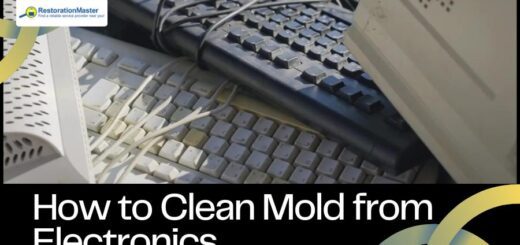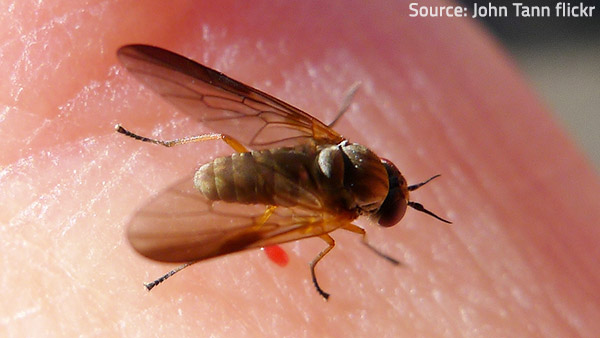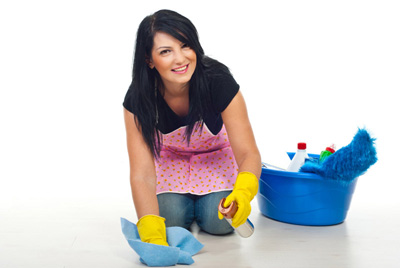7 School Cleaning Tips
A clean school is linked with improved student health, learning, and performance. Not only do clean schools help preserve students’ wellbeing, but they significantly reduce the cost of custodial programs. Even better, green cleaning methods in schools are beneficial to the environment.
Maintaining a clean school requires a few tips. Firstly, it is helpful to understand the differences between cleaning, disinfecting, and sanitizing. These three procedures are instrumental in helping to ward off the germs and bacteria that easily infiltrate school grounds and cause infectionInfection is the invasion and multiplication of harmful micr... More.
1. Know the differences between cleaning, disinfecting and sanitizing
Cleaning is accomplished with soap and water. Dirt, grime, and impurities are removed from objects and surfaces. Germs are rarely killed during cleaning but are instead removed. Removing surface-level germs helps to lower their numbers and reduces the risk of infectionInfection is the invasion and multiplication of harmful micr... More.
Germs are killed during the process of disinfecting. However, disinfecting does not clean surfaces and objects. Sanitizing works to decrease the number of germs on the premises to one that is at a safe and acceptable level; public health standards dictate safety levels.
2. Know how frequently schools should be cleaned
Daily cleaning regimens should be implemented in schools. Commonly handled objects, such as doorknobs, tables and desks, require a thorough sanitization. Remember that the flu virus can live on surfaces for up to 48 hours, making routine cleaningRoutine cleaning is the regular cleaning performed to mainta... More especially critical during flu season.
3. Know what areas of the school should be cleaned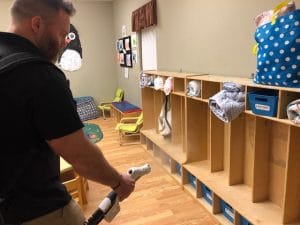
Cleanup processes should target various areas of the school building. School restrooms, gymnasium, and locker rooms require a full sanitization from the floor to the ceiling. Cleaning the tile grout inside the school also helps to preserve or improve its slip-resistant properties.
A clean carpet helps to reduce the irritants that trigger allergies and asthma in students. Plus, a well-maintained carpet endures, is aesthetically pleasing and delivers a positive impression. Carpets should be deep cleaned and sanitized. Hardwood floors should undergo stripping and waxing.
Foodservice areas and the cafeteria are areas of high traffic and must be thoroughly cleaned. The floors require a deep cleaning. All food preparationPreparation is the steps taken to ready a property, equipmen... More equipment should also be cleaned and sanitized. A routine cleaningRoutine cleaning is the regular cleaning performed to mainta... More schedule to maintain the cafeteria and other foodservice areas is necessary.
The school’s HVAC unit will continue to run smoothly with preventive maintenanceMaintenance is the routine care, inspection, and repair of a... More. Maximum air circulation results from air duct cleaning. Regularly changing the air filters also helps to improve air quality within the school and reduces the buildup of bacteria.
School surfaces that are frequently touched should also receive daily sanitizing: desks, countertops, computer keyboards, doorknobs, phones, toys, faucets and hands-on learning devices. Disinfecting objects and surfaces that undergo daily handling may also be necessary if the school requires it.
4. Know what types of cleaning to avoid
Standard cleaning techniques are acceptable to remove the flu virus from surfaces. Certain cleaning methods, such as fumigating, relying heavily on room deodorizers or wiping down ceilings, are not recommended. Such tacticsTactics are the specific methods or actions used to achieve ... More may irritate students’ eyes, noses and throats and aggravate asthmatic symptoms.
5. Know proper cleaning methods
When utilizing cleaning chemicals and products, carefully read the label and follow the given instructions. Wear protective gloves when working with bleach solutions. Use general household cleaners to efficiently remove germs. After rinsing away the cleaning product, kill germs with an EPA-approved disinfectantA disinfectant is a chemical substance used to kill or inact... More.
When using a certain cleaning product, be aware that the solutionA solution is a homogeneous mixture of two or more substance... More may list different procedures when it is used as a cleaner and another for disinfectantA disinfectant is a chemical substance used to kill or inact... More use. Typically, disinfectants are left on the surface for a longer period of time, about three to five minutes, prior to being wiped away.
Cleaning electronics with disinfectantA disinfectant is a chemical substance used to kill or inact... More wipes may have its own set of instructions. Some disinfectantA disinfectant is a chemical substance used to kill or inact... More wipes require multiple wipes so that the surface remains wet for a set period of time. Prior to using wipes for cleaning, ensure the technology is able to sustain moisture.
6. Know cleaning safety tips
Handling cleaning chemicals should be done correctly to prevent injury. Some cleaning products list hazard warnings that require close attention. Be aware that combining cleaning solutions with disinfectants can be deadly (for example, bleach mixed with ammonia produces toxic fumes).
After using cleaning items, immediately discard them into a trash can. When emptying waste baskets, be careful to avoid touching the contents, which may include used tissues or other waste. Take extra precaution and wear gloves when handling waste or emptying trash cans. Wash hands promptly afterward.
7. Hire a commercial cleaning company
School janitorial positions have a high turnover rate. In such instances, hiring a commercial cleaning company with experience in cleaning schools is ideal. Plus, hiring a professional cleaning crew is more cost-effective than continually training and retaining a series of janitorial staff.
Commercial Cleaning Services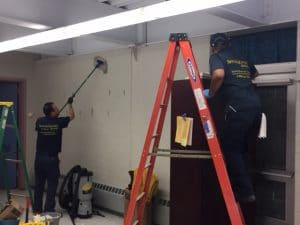
Commercial cleaning companies are flexible with availability. Cleaning schedules may be established on a daily, weekly or monthly basis. The cleaning companies may be hired for the entirety of the school year, or they may be scheduled to clean after a specific school event.
Keeping a day care, elementary school, high school or university clean is a large undertaking, one that requires expertise from professional commercial cleaning service. With a team of experienced cleaning crews, they will ensure your buildings remain clean and germ-free.
These professionals utilize green cleaning methods, which not only preserves the school’s cleanliness but sustains the environment. They may use cutting edge technology, like electrostatic spraying, to completely disinfect school property, even in hard to access places.
Cleaning crews provide dependable cleaning solutions to a variety of schools, from charter schools to universities. When you seek better indoor air qualityIndoor air quality (IAQ) refers to the condition of the air ... More, reduced student absenteeism due to illness and a lower risk of asthma and allergy symptoms, consult reputable school cleaners in your area.











